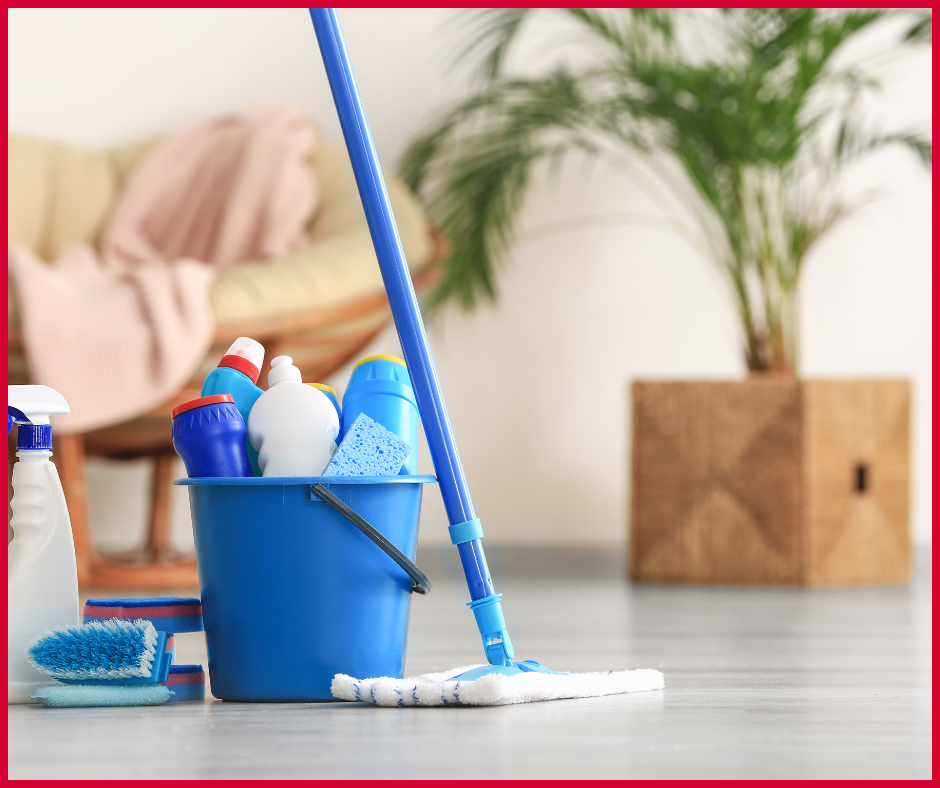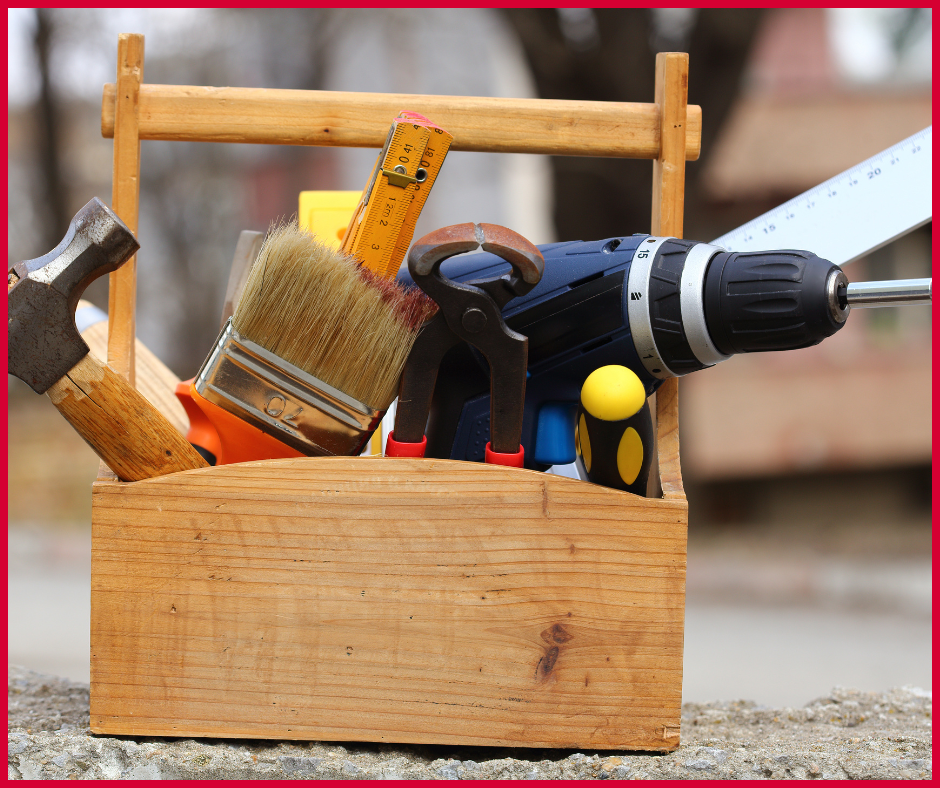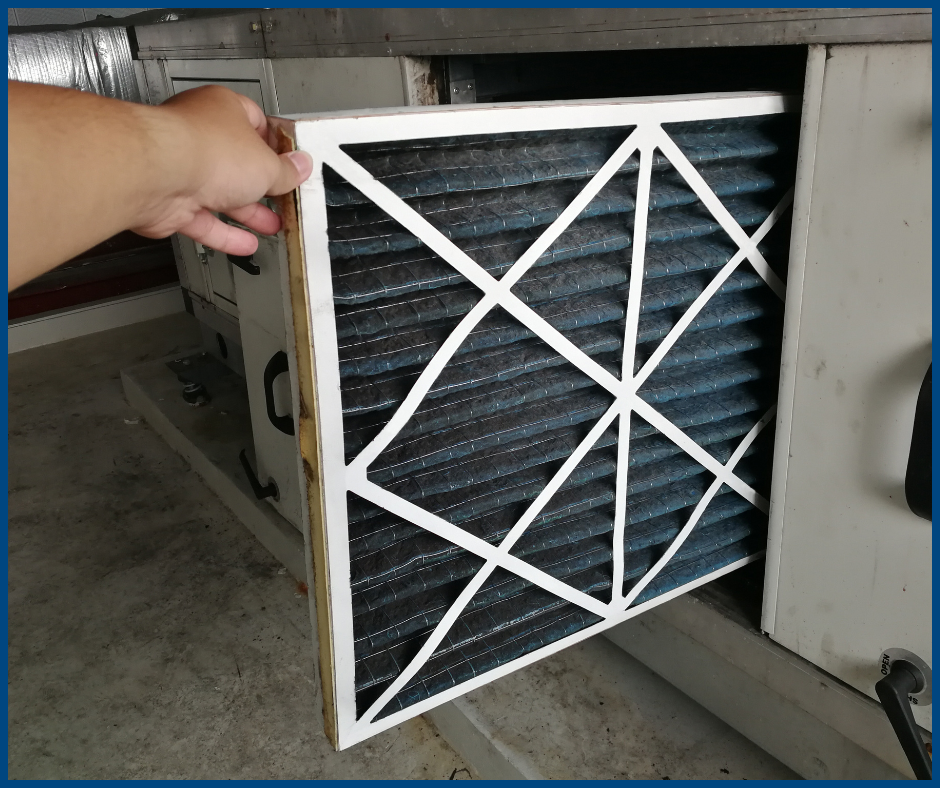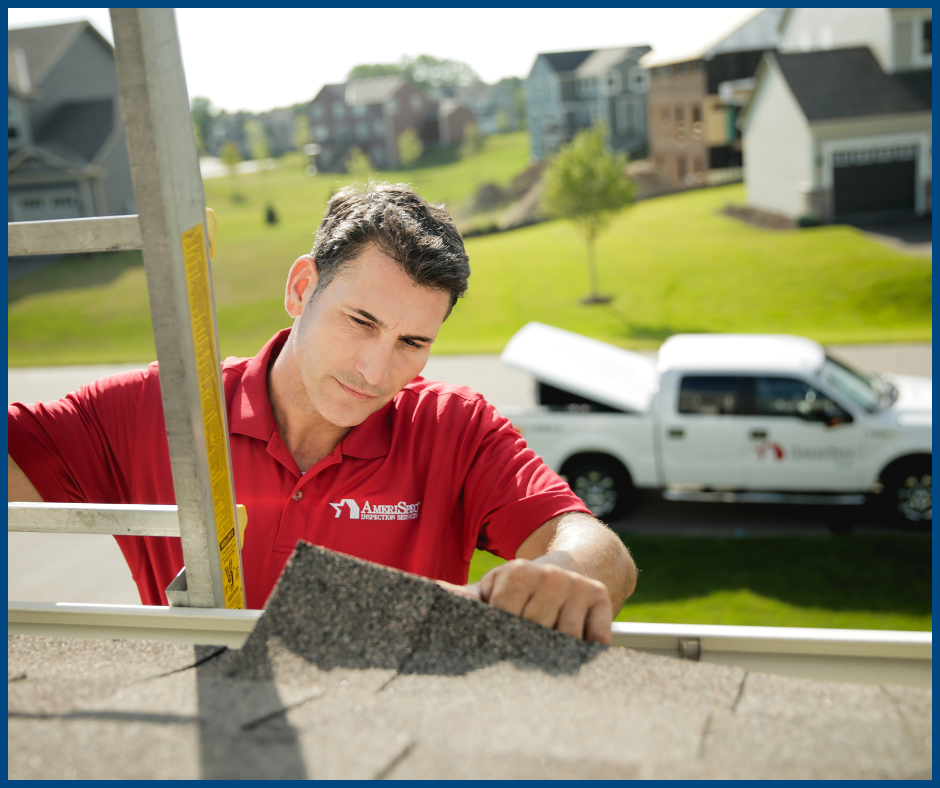Ready to List? Make Sure Your Home Is Actually Ready to Sell
Thinking about putting your home on the market? Before you stick that “For Sale” sign in the yard, it’s important to take a step back and ask yourself: Is your home truly ready to sell? Knowing how to prepare your home before selling can save you time, reduce buyer objections, and even help you get a better offer. Even the most well-maintained homes can have hidden issues that stand out to potential buyers—and their inspectors. Taking time to properly prepare your home can make the difference between a smooth sale and a stalled one.
Why Preparation Matters
Buyers are looking for more than charm—they want peace of mind. Cracks in the drywall, slow drains, flickering lights, or signs of moisture can raise red flags. Many of these concerns can be addressed ahead of time with a little effort and the right support.
How to Prepare Your Home Before Selling
1. Get a Listing Inspection

One of the smartest moves you can make is scheduling a listing inspection. This gives you a clear view of what buyers might find and allows you to address any major issues on your terms—not during negotiations. At AmeriSpec, our certified & licensed inspectors review over 400 components of your home, providing a detailed report with photos.
2. Fix the Small Stuff
Loose door handles, chipped paint, and leaky faucets might seem minor, but they can add up to a negative impression. Buyers may wonder if small oversights mean bigger problems are hiding beneath the surface.
3. Declutter and Deep Clean
Creating a clean, spacious, and neutral environment helps buyers imagine themselves in your space. Consider a deep clean, clear out closets and corners, and tidy up outdoor areas to boost curb appeal.
4. Don’t Overlook the Systems
Your HVAC, electrical panel, water heater, and plumbing should be in working order. Even if they’re older, documentation of regular maintenance goes a long way.
5. Be Proactive, Not Reactive
Buyers are more confident when sellers appear transparent and prepared. Offering inspection reports, warranties, or recent service receipts shows you’re serious and trustworthy.
Conclusion
If you’re wondering how to prepare your home before selling, it starts with knowledge. A little preparation now can help you sell faster, with fewer surprises, and potentially for a better price.
Thinking about a pre-listing inspection?
Schedule with AmeriSpec today and get the confidence you need before your home hits the market.
Your Move-In Must-Haves: Items You’ll Want on Day One
You’ve signed the papers, the keys are finally in your hand, and the moving truck just pulled away. Now what? Before the full unpacking chaos begins, it’s helpful to have a few move-in essentials for new homeowners ready to go. These simple items can make all the difference between a stressful first night and a smooth start in your new space.
Whether you’re a first-time buyer or relocating to your next home, here’s what you’ll want within arm’s reach on day one.
Start with a Clean Slate
The first thing many new homeowners want to do is give the space a quick clean before settling in. Even if your home looks spotless, it’s comforting to wipe down surfaces and freshen things up.
Move-in essentials for new homeowners should always include:
-
All-purpose cleaner
-
Disinfecting wipes
-
Trash bags
-
Paper towels or cleaning cloths
-
A broom or small vacuum
Having a basic cleaning kit handy saves you from digging through boxes just to find the paper towels.
Bathroom Basics Are Non-Negotiable
You’ll definitely want to stock your bathroom before nightfall. After a long day of moving, you’ll be thankful you remembered the basics.
Include these bathroom move-in essentials in your first-day bag:
-
Toilet paper (don’t forget!)
-
Hand soap
-
Toothbrush and toothpaste
-
Towels and washcloths
-
Shampoo and shower supplies
It’s all about comfort—starting with that first shower in your new home.
Simple Kitchen Supplies
No one expects to whip up a gourmet meal on move-in day, but you’ll still need a few items to stay sane. Coffee, snacks, and the ability to make a sandwich go a long way.
Be sure your kitchen move-in essentials for new homeowners include:
-
Paper plates and utensils
-
Dish soap and a sponge
-
Snacks and bottled water
-
One pot or pan for simple meals
-
Coffee, tea, or your favorite morning drink
Even if your fridge isn’t fully stocked yet, having a few basics makes the space feel more functional right away.
A Small Toolkit = Big Help
You might not plan to hang anything on the walls on day one—but just wait until you need scissors to open a box or a screwdriver to tighten a loose doorknob.
Here are some tool-related move-in essentials to include:
-
Screwdrivers
-
Hammer
-
Tape measure
-
Flashlight
-
Utility knife or scissors
-
Extension cords and batteries
You’ll likely use one or more of these within the first hour of being in your new place.
Electronics & Chargers
Moving day can zap your phone battery fast—between navigation, contacting movers, or snapping “we did it!” photos. Make sure you have:
-
Phone chargers
-
Laptop and tablet chargers
-
Power strips
-
Wi-Fi information (if already set up)
Keeping tech-related move-in essentials in one labeled bag makes them easy to find when you need them most.
Bedding & Nighttime Comfort
One of the best feelings after a long day of moving is falling into a clean, made bed. Don’t leave this part until last—prep it early and thank yourself later.
Comfort-focused move-in essentials for new homeowners include:
-
Bed sheets
-
Pillows and pillowcases
-
Blanket or comforter
-
Pajamas and a change of clothes
Even if the rest of the house is in boxes, a cozy bed can make the whole place feel more like home.
Must-Have Documents
Don’t let important paperwork disappear into the sea of cardboard. Keep a folder of must-haves in a place that’s easy to grab:
-
Closing documents or lease
-
Utility account numbers or contact info
-
Driver’s license
-
Home inspection report
-
Emergency contacts
These organizational move-in essentials will save time and reduce stress if anything unexpected pops up.
Safety First
When you’re in a new home, making sure it feels safe is part of settling in. Check that the smoke detectors work, confirm the door locks, and consider setting up a security system.
Some homeowners opt for added peace of mind with services like Secure 24’s ADT protection—one more way to simplify your move and feel secure from the start.
Final Thoughts
The best move-in essentials for new homeowners aren’t fancy—they’re practical, helpful, and make your first day easier. By setting aside these key items ahead of time, you can avoid that frantic “Where’s the toilet paper?!” moment and focus on enjoying your new beginning.
From pre-move planning to inspections and helpful home tips, we’re here to support you every step of the way. Visit www.amsde.net to learn how we help homeowners feel confident and prepared—before, during, and after move-in day.
How to Extend the life of your HVAC
Your HVAC system works hard to keep your home comfortable year-round. Whether it’s battling summer heat or winter chills, it’s one of the most relied-on parts of your home. Like any major home feature, your HVAC needs care to stay efficient and avoid expensive repairs or early replacement. Here’s how you can help extend the life of your HVAC system—and protect your investment.
1. Change the Filter Regularly
This is one of the simplest ways to protect your HVAC system. A dirty or clogged filter forces the system to work harder, which increases wear and tear. Replace your filter at least every 1–3 months depending on usage and the type of filter.
2. Keep Vents Clear
Make sure furniture, rugs, or curtains aren’t blocking air vents. Obstructed airflow reduces system efficiency and can lead to uneven heating or cooling throughout your home.
3. Schedule Seasonal Tune-Ups
Professional maintenance in the spring and fall helps keep your system running smoothly. HVAC technicians can spot small problems before they turn into big ones, clean critical components, and ensure everything is working at peak efficiency.
4. Use a Programmable Thermostat
Adjusting your thermostat when you’re not home can reduce strain on your system. A programmable or smart thermostat can help regulate usage and reduce unnecessary wear.
5. Clean the Outdoor Unit
Your system’s outdoor unit (the condenser) needs space to breathe. Keep the area around it free of leaves, grass clippings, and debris. Gently rinse the coils with a garden hose to help improve efficiency.
6. Seal Leaky Ducts
Leaky ductwork makes your system work harder to maintain your desired temperature. Consider having your ducts inspected and sealed to improve airflow and overall system performance.
7. Keep an Eye—and an Ear—Out
Unusual sounds, uneven temperatures, or increased energy bills can all be signs of HVAC trouble. Addressing these early can help prevent further damage and costly repairs.
Final Thoughts
With regular attention and small habit changes, you can extend the life of your HVAC system and avoid surprise breakdowns. A little preventative effort goes a long way toward keeping your home comfortable and your system running strong for years to come.
What Home Inspectors Evaluate on the Exterior of a Property
When you’re considering a home purchase, it’s easy to get caught up in paint colors, floor plans, and staging. But while the interior might steal your attention, the exterior of a home often tells the real story. A thorough exterior home inspection can reveal hidden issues that impact everything from safety to long-term maintenance costs.
So, what exactly does a home inspector look for outside the home? Let’s walk through it.
First Impressions: What the Inspector Sees at a Glance
Before they even step onto the property, a trained home inspector is already sizing things up. They’re looking at how the home sits on the lot, how water drains around the foundation, and whether anything stands out as a potential concern—such as sagging gutters, an aging roof, or signs of neglect.
Roof: The Home’s First Line of Defense
The roof plays a major role in protecting the home from water damage and weather-related wear. During the exterior inspection, your inspector will assess:
-
The condition of shingles or other roofing materials
-
Signs of leaks or water intrusion
-
Flashing around chimneys and vents
-
Gutter function and downspout placement
Even if the roof “looks fine” from the ground, inspectors are trained to spot subtle signs that could indicate deeper problems.
Siding and Trim: Protecting the Structure
Next, attention turns to the siding and exterior walls. Whether the home is covered in vinyl, wood, brick, or another material, your inspector is checking for:
-
Cracks, warping, or damage
-
Peeling paint or signs of rot
-
Gaps or holes that could let in pests or moisture
Damaged siding might not seem urgent, but over time, it can lead to insulation problems, mold, or structural decay.
Windows and Doors: More Than Just Curb Appeal
Windows and doors need to be both functional and sealed tight. Your inspector will look at:
-
Frame condition and alignment
-
Weather stripping and caulking
-
Evidence of leaks or previous repairs
Poor sealing can lead to drafts, higher energy bills, and water intrusion. It’s about more than comfort—it’s about long-term protection.
Foundation: Small Clues with Big Implications
While most of a home’s foundation is hidden below grade, visible areas can offer important insights. An exterior home inspection includes checking for:
-
Visible cracks or signs of settling
-
Water pooling near the base of the home
-
Stains or signs of past moisture problems
Foundation issues don’t always mean the deal’s off—but you’ll want to know before making a decision.
Decks, Patios, and Porches: Safety and Stability
Outdoor living spaces add charm, but only if they’re safe and sound. The inspector checks:
-
The way the structure is anchored
-
Railing stability and stair safety
-
Signs of rot, pest damage, or loose boards
Even well-maintained decks can develop issues over time, especially in areas with high moisture or heavy sun exposure.
Walkways and Driveways: Hidden Hazards
Cracked or uneven walkways might not seem like a big deal—until someone trips. Your inspector will assess:
-
Surface condition
-
Drainage around hardscaped areas
-
Potential trip hazards
These features also contribute to curb appeal and long-term maintenance planning.
Grading and Drainage: Keeping Water Where It Belongs
Proper grading directs water away from the home. During the inspection, your inspector will evaluate:
-
The slope of the land surrounding the property
-
Landscaping features that may affect water flow
-
Retaining wall stability (if applicable)
Poor drainage is one of the most common causes of long-term home damage—and one of the easiest to miss.
Why the Exterior Home Inspection Matters
Even if the home looks beautiful on the surface, underlying exterior issues can lead to big surprises. From moisture intrusion to structural wear, these concerns are easier—and often cheaper—to address when they’re caught early.
At AmeriSpec, we provide a comprehensive exterior home inspection as part of every full home evaluation. We’ve completed over 60,000 inspections in Delaware, and our mission is simple: help you make informed decisions with confidence.



